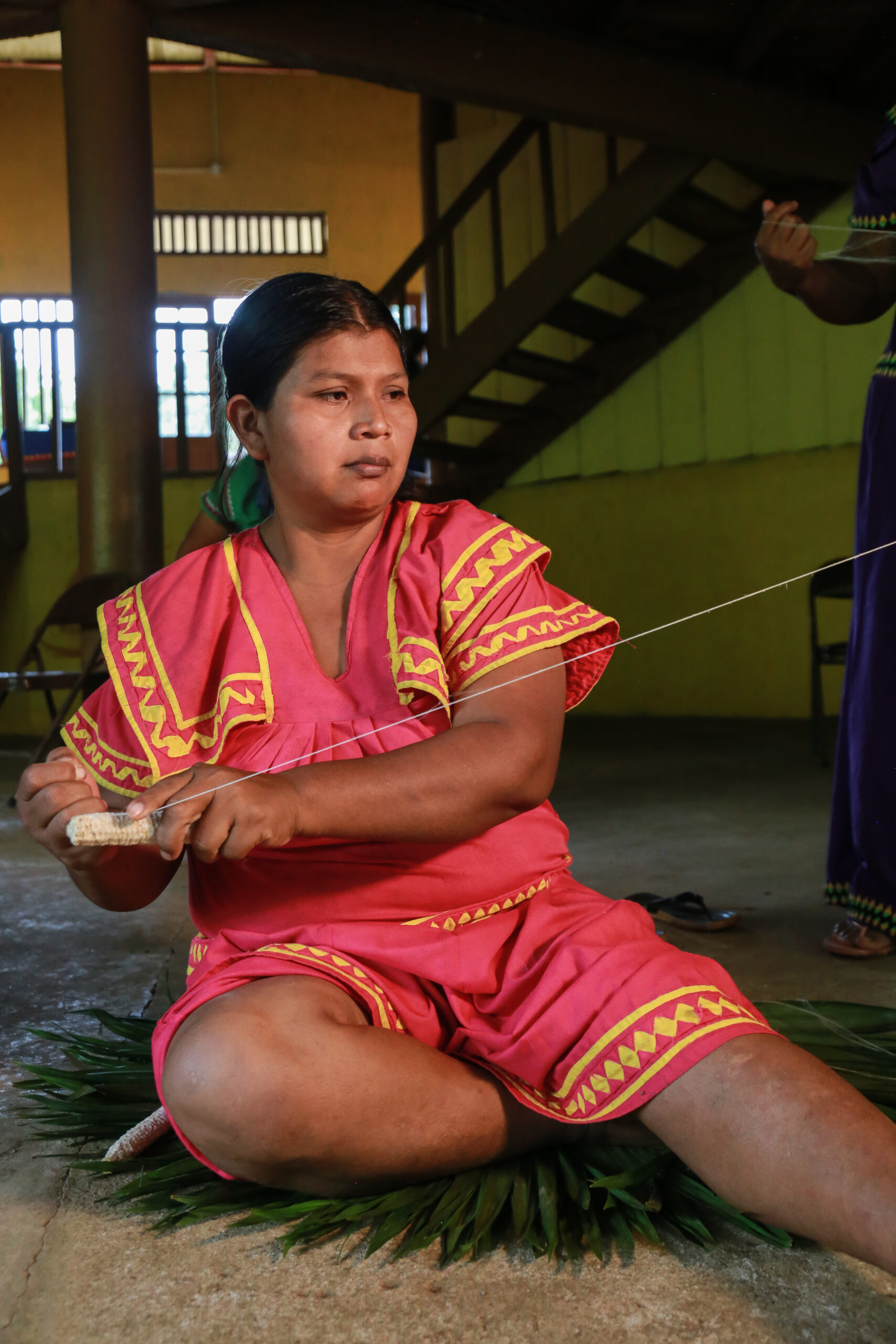Description
La kra (chácara) es una bolsa artesanal tejida por las mujeres de los pueblos indígenas ngäbe y bugle, de la Comarca Ngäbe Bugle, de Panamá. Se elabora con fibras naturales de las plantas de kika (pita – Aechmea magdalanae y cabuya y Furcraea cabuya) y tintes naturales para los diseños con formas geométricas, con significados alusivos a la naturaleza y a la tradición oral. Se cuenta cómo los ancestros reproducían en su indumentaria los diseños de la gran serpiente magatda para neutralizar sus poderes y así protegerse usando sus propios diseños.
Las hojas de la kika se amarran en un tronco y se raspan hasta quitarle la pulpa de la hoja y dejar solo los hilos que deben ser lavados y secados al sereno. Realizan diversos procesos de rayado, triturado, cosido, secado, para obtener los tintes naturales de raíces, hojas, frutos, maderas y semillas para colorearlas y tejer de manera combinada con las fibras de color natural. Después unen varios hilos frotándolos sobre el muslo para darles el grosor que desean según el tamaño y tipo de tejido de la kra (delgado o grueso, de tejido holgado o apretado) y según la combinación de colores. La kra también es tejida con fibras textiles obtenidas del árbol cortezo (Apeiba tiborbou), de cuyas fibras también tejen hamacas y sogas. Se cortan ramas de cortezo y se sumergen en el río de dos a tres semanas, la corteza se desprenderá, se extraen las fibras y después de secas se hace el mismo proceso que con la kika.
Las madres y abuelas tejen durante el consejo tradicional o se reúnen para aconsejar a las niñas mediante el método de «aprender haciendo y escuchando». La kra es utilizada para cargar al niño pequeño, para llevar enseres o productos, o como parte del atuendo masculino o femenino.
english
The Kra handmade bag
The “kra” (“chácara”) is a handmade bag woven by the women of the indigenous peoples of the Comarca Ngäbe Bugle. It is made with natural fibres from the plants “kika” pita (Aechmea magdalenae) and “cabuya” and (Furcraea cabuya) and natural dyes for the designs with geometric shapes, with meanings alluding to nature and oral tradition. It is told how the ancestors reproduced the designs of the great snake “magatda” on their clothing to neutralise its powers and thus protect themselves using their own designs.
The leaves of the “kika” are tied to a trunk and scraped until the pulp of the leaf is removed, leaving only the threads to be washed and dried in the sun. They carry out various processes of scratching, shredding, sewing, drying, to obtain the natural dyes from roots, leaves, fruits, wood and seeds to colour them and weave them in combination with the natural coloured fibres. Then they join several threads by rubbing them on the thigh to give them the desired thickness according to the size and type of weave of the “kra” (thin or thick, loosely woven or tightly woven) and according to the combination of colours. It is also woven from textile fibres obtained from the bark tree (Apeiba tiborbou), from whose fibres they also weave hammocks and ropes. Cortezo branches are cut and immersed in the river for two to three weeks, the bark will peel off, the fibres are extracted and after drying, the same process is done with the “kika”.
Mothers and grandmothers weave during the traditional council or meet to advise the girls using the “learning by doing and listening” method. The “kra” is used to carry the small child, to carry belongings or products and as part of the male or female wardrobe.



Reviews
There are no reviews yet.